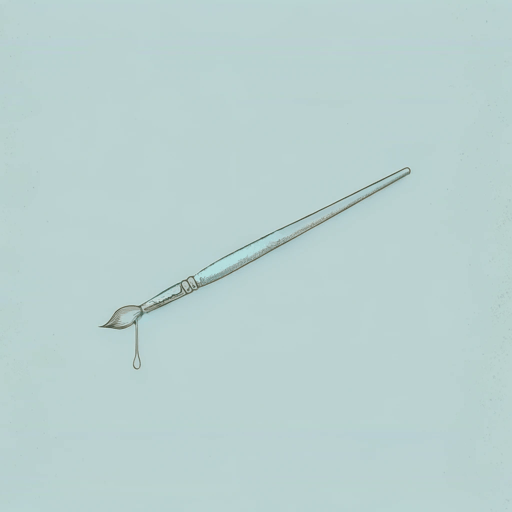59 pages • 1 hour read
Ibi Zoboi, Yusef SalaamPunching the Air
Fiction | Novel/Book in Verse | YA | Published in 2020A modern alternative to SparkNotes and CliffsNotes, SuperSummary offers high-quality Study Guides with detailed chapter summaries and analysis of major themes, characters, and more. For select classroom titles, we also provide Teaching Guides with discussion and quiz questions to prompt student engagement.
Summary and Study Guide
Overview
Punching the Air (2020) is a young adult novel in verse by award-winning author Ibi Zoboi and prison reform activist Yusef Salaam. The novel won a Walter Dean Myer’s Award for Outstanding Children’s Literature, was a New York Times bestseller, and was awarded the New York Public Library Best Book of the Year. Ibi Zoboi, a Haitian American writer, has earned numerous awards for her previous books, including American Street, which was a finalist for the National Book Award for Young People’s Literature in 2017, and Pride. Dr. Yusef Salaam is one of the Central Park Five, an exonerated group of Black men who were wrongfully convicted as teenagers and spent years in jail before receiving overturned sentences. Now known as one of the Exonerated Five, Salaam received the Lifetime Achievement Award from President Barack Obama.
Note: This guide quotes and obscures the author’s use of the n-word.
Plot Summary
Sixteen-year-old African American Amal Shahid narrates Punching the Air in verse; his words and paintings illuminate each page with the story of his wrongful incarceration. While out with his friends one night, the group has an altercation with a group of white boys in a recently gentrified area. The area was formerly part of Amal’s neighborhood, but only white people use it now. A fight soon breaks out, in which Amal admits he threw the first punch, but Amal was not the person who beat up a white kid named Jeremy Mathis with his skateboard. In reality, Amal ran away from the scene, forgetting his skateboard at the fight, and was arrested on his way home. Although the novel mostly takes place in present time, there are moments throughout the story where Amal reminisces about his past. This is how he begins his story, discussing his birth and how he was made to watch videos of it as he was growing up. From his birth, the narrative quickly moves into the courtroom, seeing everything through the mind of Amal during his trial. Amal already feels that the trial is unfair and that he is being portrayed in a negative light based on the testimony of his art teacher Ms. Rinaldi and the words of his seemingly “two-faced” lawyer Clyde. The white kid who Amal is being convicted of brutally beating up is not able to make a statement in court because he is in a coma. At the end of Part 1, the court convicts Amal and sends him to prison.
As Amal enters the prison system and time passes, he solidifies his ideas about how the world works against Black people. Everything about the prison reminds him of school; he understands that a connection exists between school and prison, especially when his school never gave second chances and had zero tolerance for misbehaviors. When Amal thinks about school, he remembers several instances where he was pushing back on the ideas of his teachers, especially Ms. Rinaldi. It was clear to him in his art school that some classes were made for the white students and that Black students were not expected to thrive there in the same way. For example, they would only study white artists, which Amal got in trouble for when pointing the discrepancy out in class.
While in prison, Amal receives letters and visits by his mother once a month. Unexpectedly, he receives a letter from Zenobia, a girl he likes from school. She tells him that she thinks of him and that she believes him when he says that he is innocent. His mother also believes in his innocence and tries to lift up Amal’s spirits every time she visits. Meanwhile, everyone is waiting for Jeremy Mathis to wake up from his coma so that he can give a statement to prove Amal should not be in jail.
Amal makes an alliance with a group of Black teenagers in prison after a group of white teenagers beat him up. One of them, Kadon, especially takes an interest in Amal after hearing Amal rapping. Kadon is also a part of a special poetry class that only “good” prisoners get to participate in, which Amal is interested in joining. However, Amal leaves his first session of the class because he does not like the activity, one that makes them reflect on their mistakes and misgivings. Amal eventually returns to class and participates more, especially with the guidance of Imani, the teacher, and the guest she brings, Dr. Kwesi Bennu. While subjugated to a biased system against Black people, Amal’s frustration with what’s happening in jail continues. His frustration leads him to draw on the walls of his cell and get into solitary confinement.
After his confinement ends, he learns that Imani is leaving and that his mom hired a new lawyer. Imani’s parting gift is to let Amal paint over the mural in the visitor’s center, which he does before the jail covers it up. This angers him immensely, but there is nothing he can do. His mother also does not get to see the mural because she is waiting at the hospital: Jeremy Mathis has finally awakened from his coma, and she wants to be there for his statement.
The novel in verse ends with Jeremy preparing to make a statement and Amal painting. The text itself never reveals whether Jeremy proves Amal’s innocence or not.
Related Titles
By these authors
Featured Collections
A Black Lives Matter Reading List
View Collection
American Literature
View Collection
Black History Month Reads
View Collection
Diverse Voices (High School)
View Collection
Novels & Books in Verse
View Collection
Pride & Shame
View Collection
School Book List Titles
View Collection
The Best of "Best Book" Lists
View Collection
Truth & Lies
View Collection




